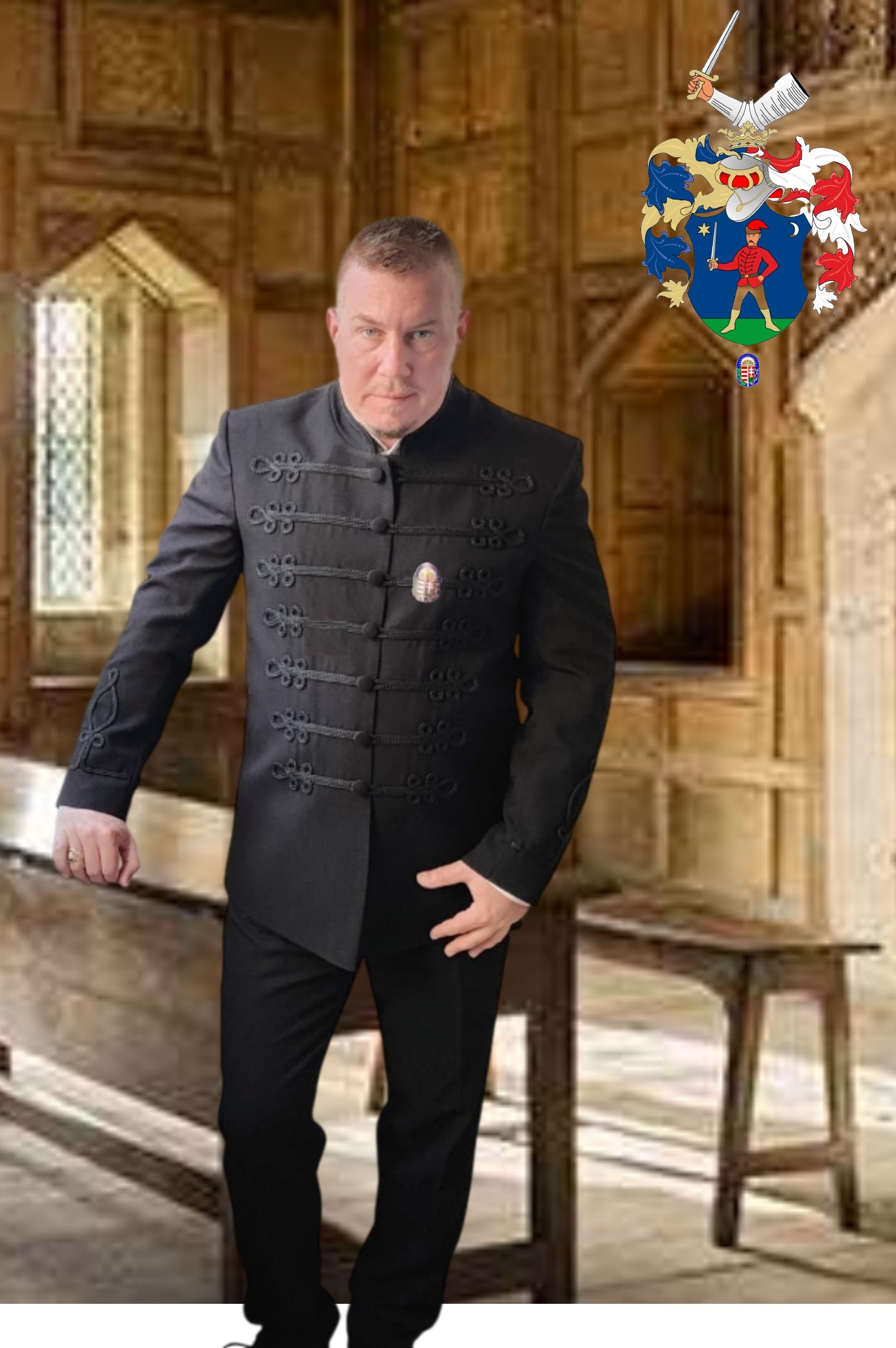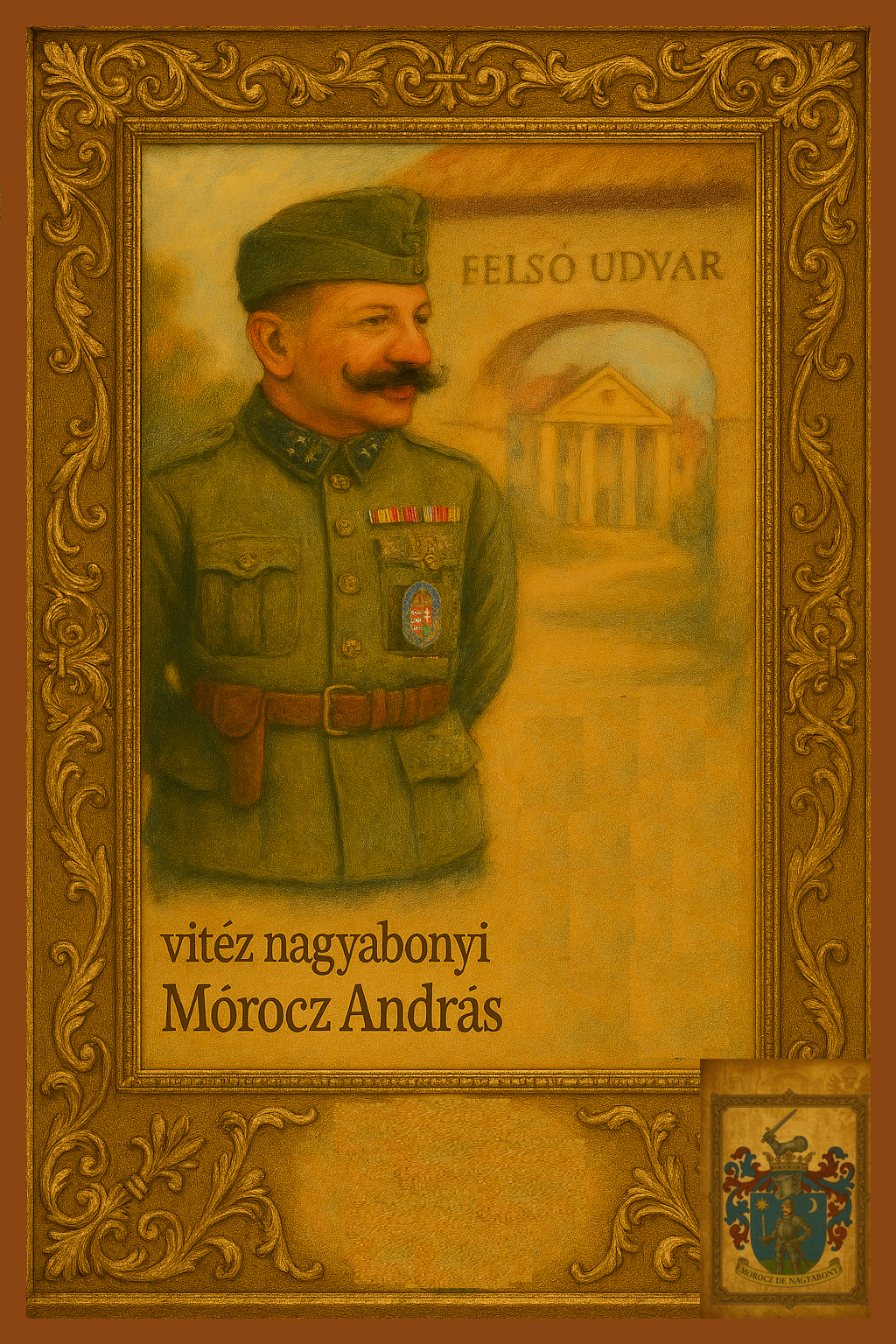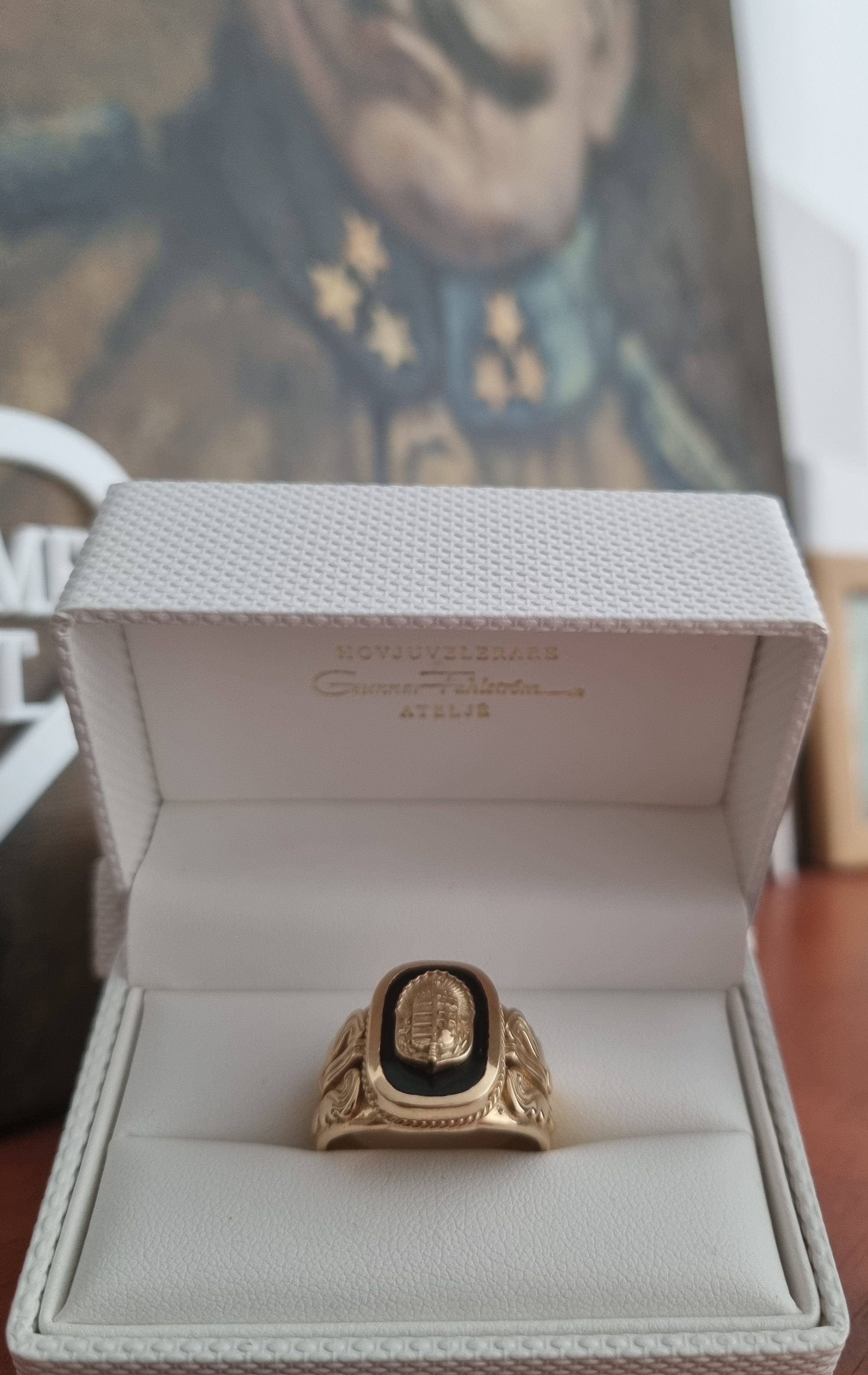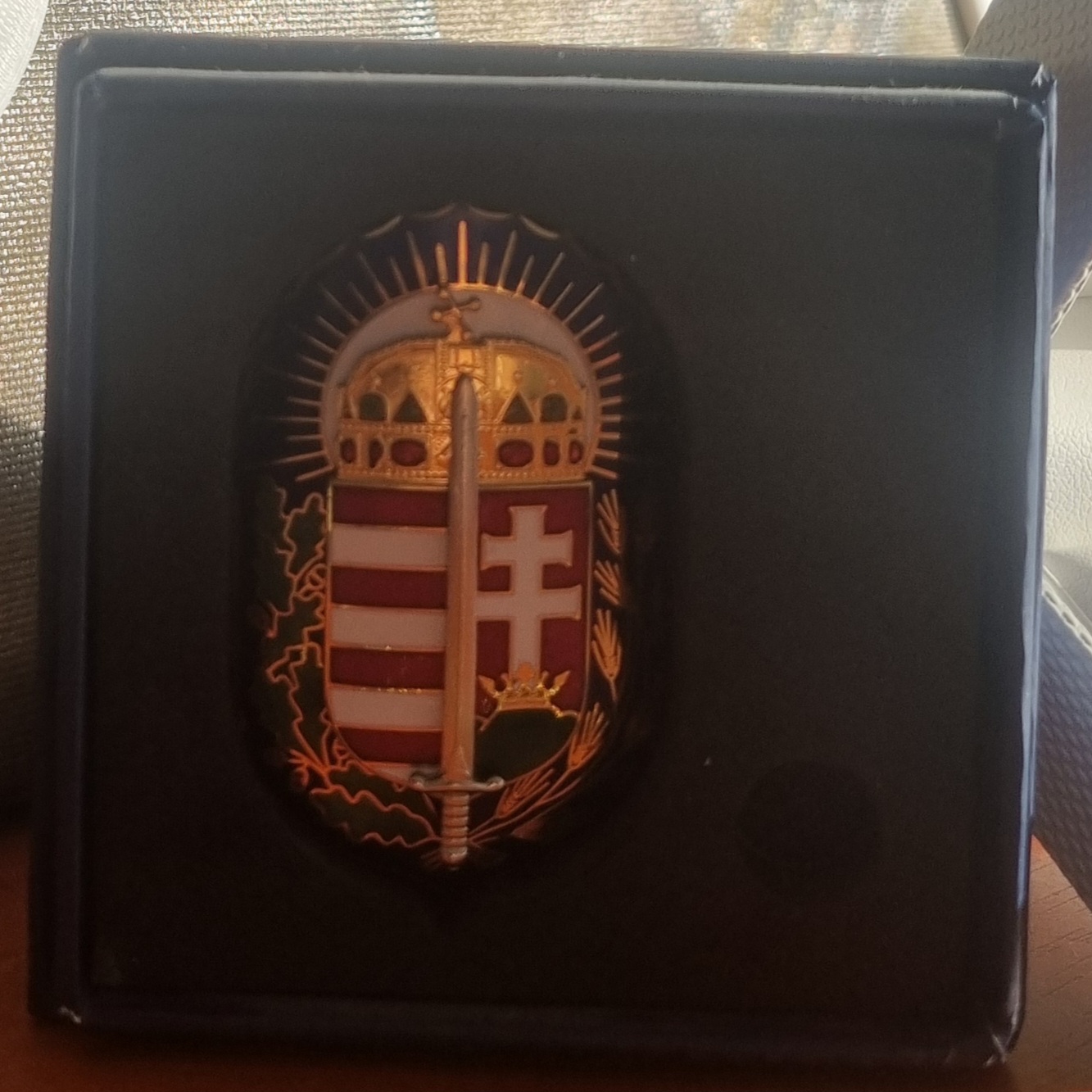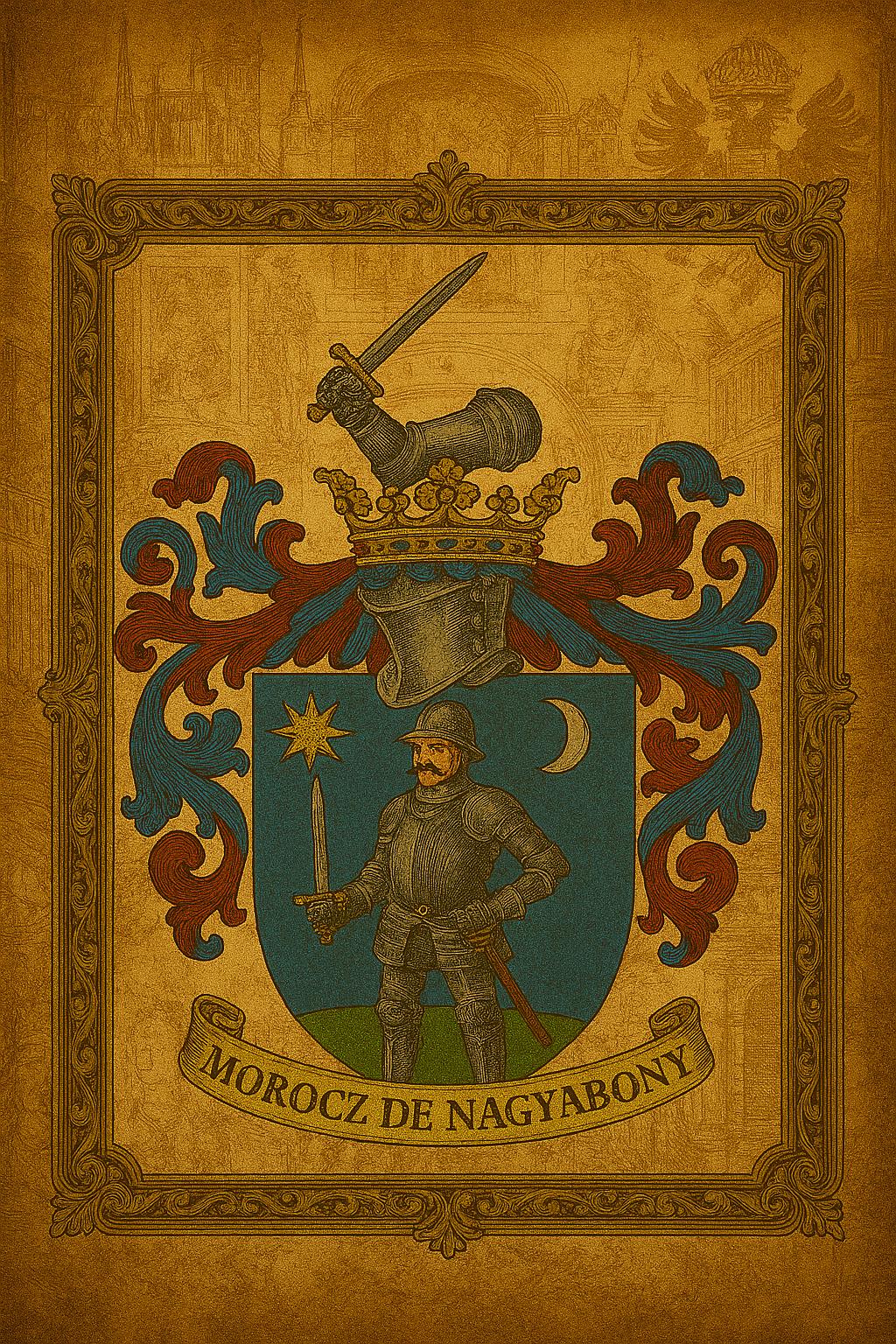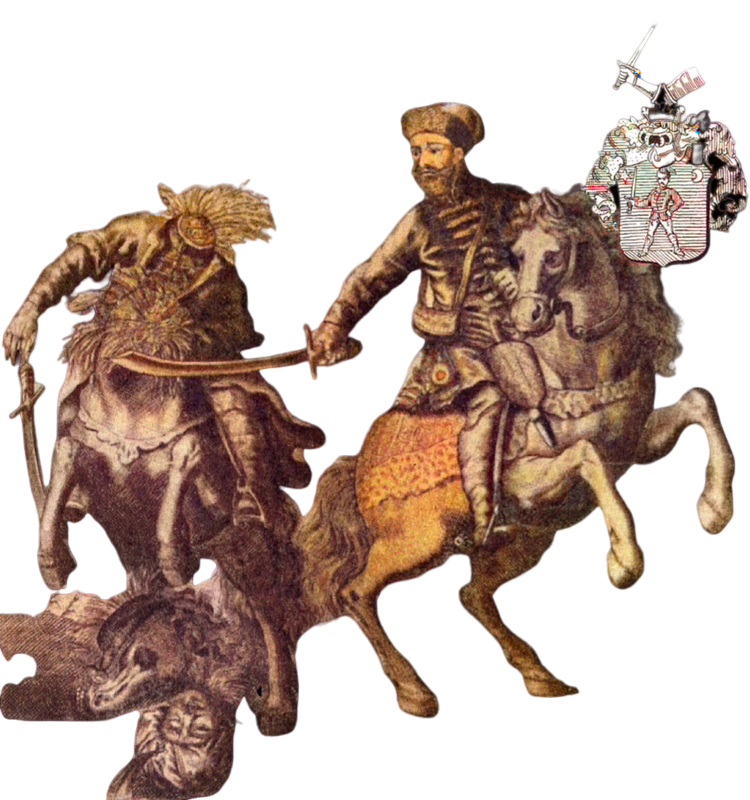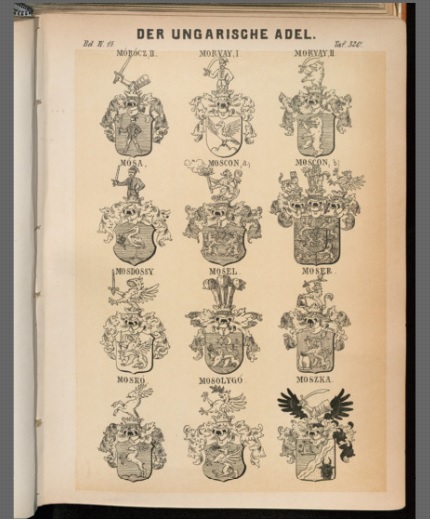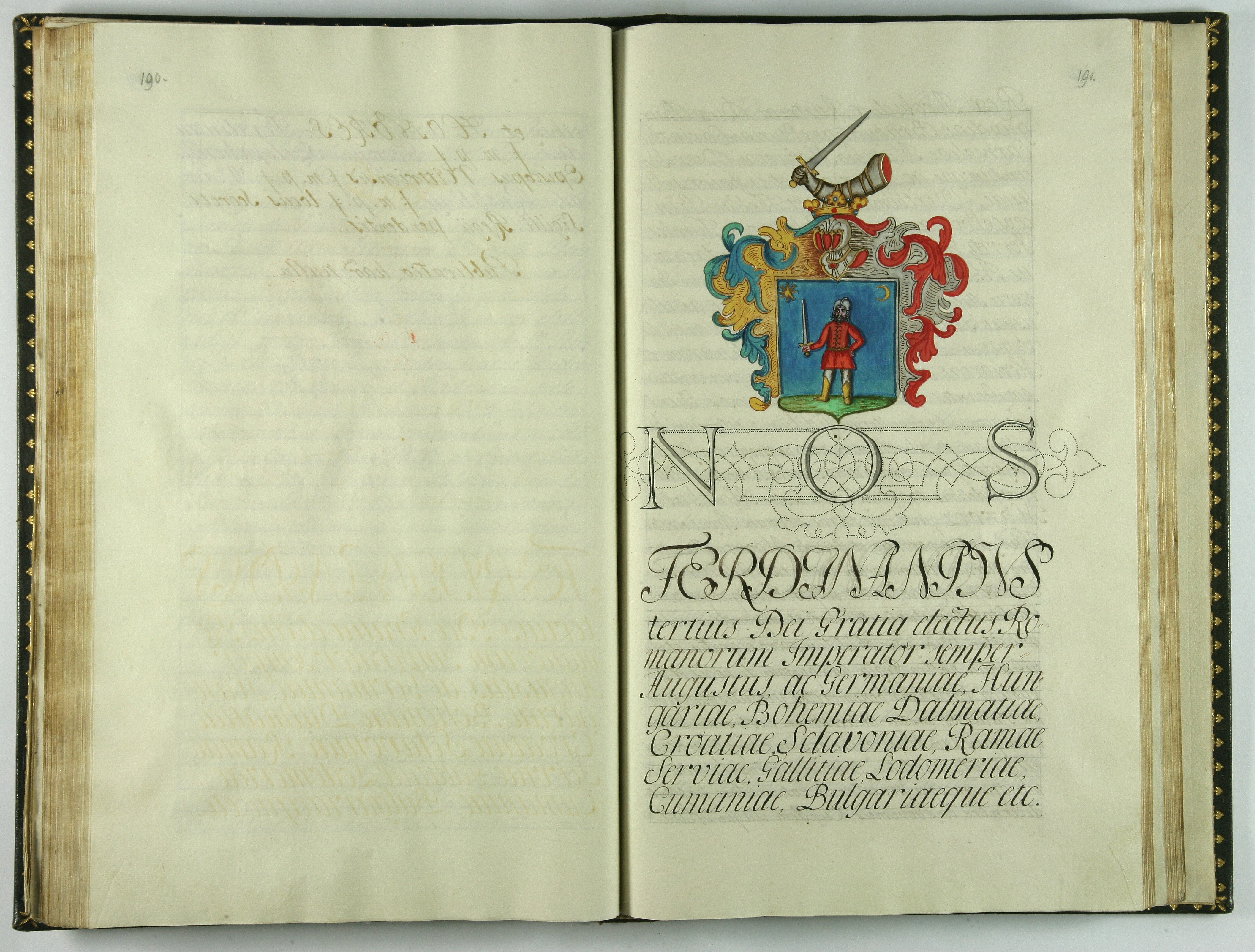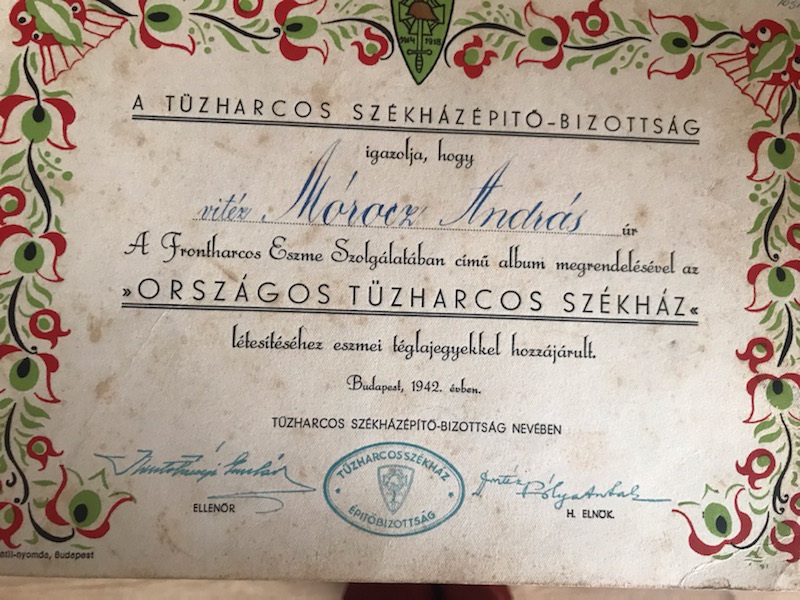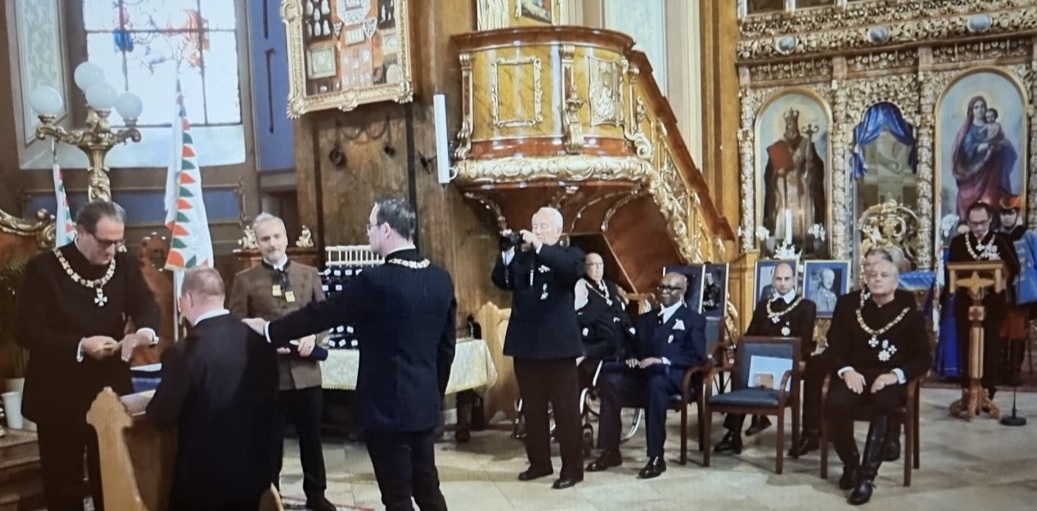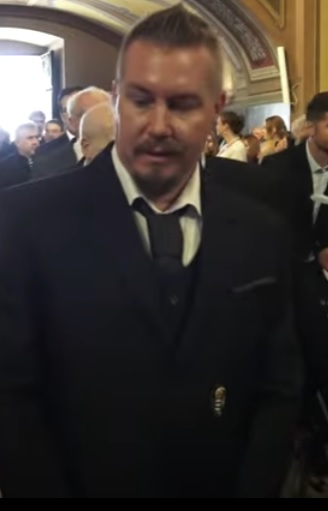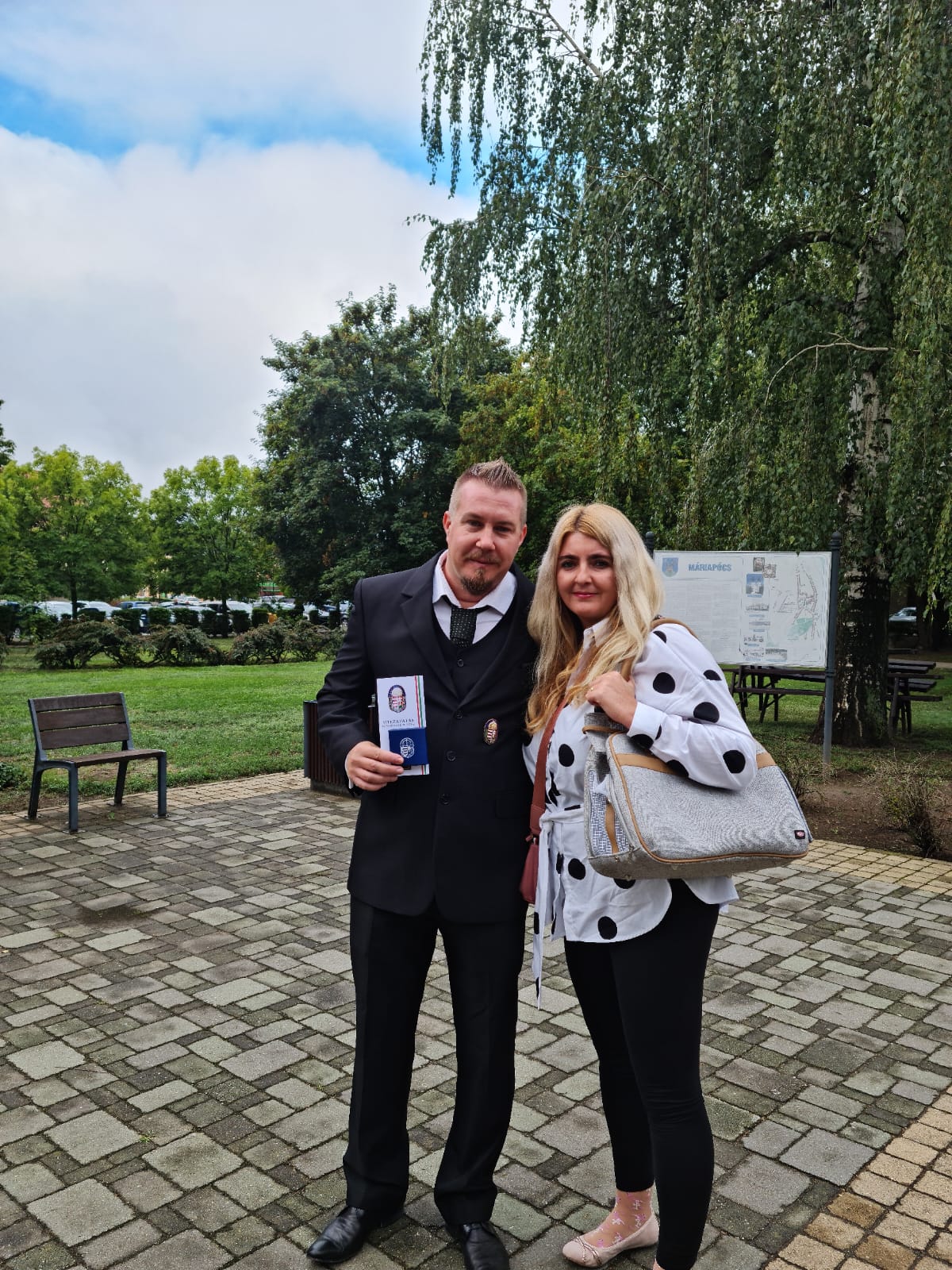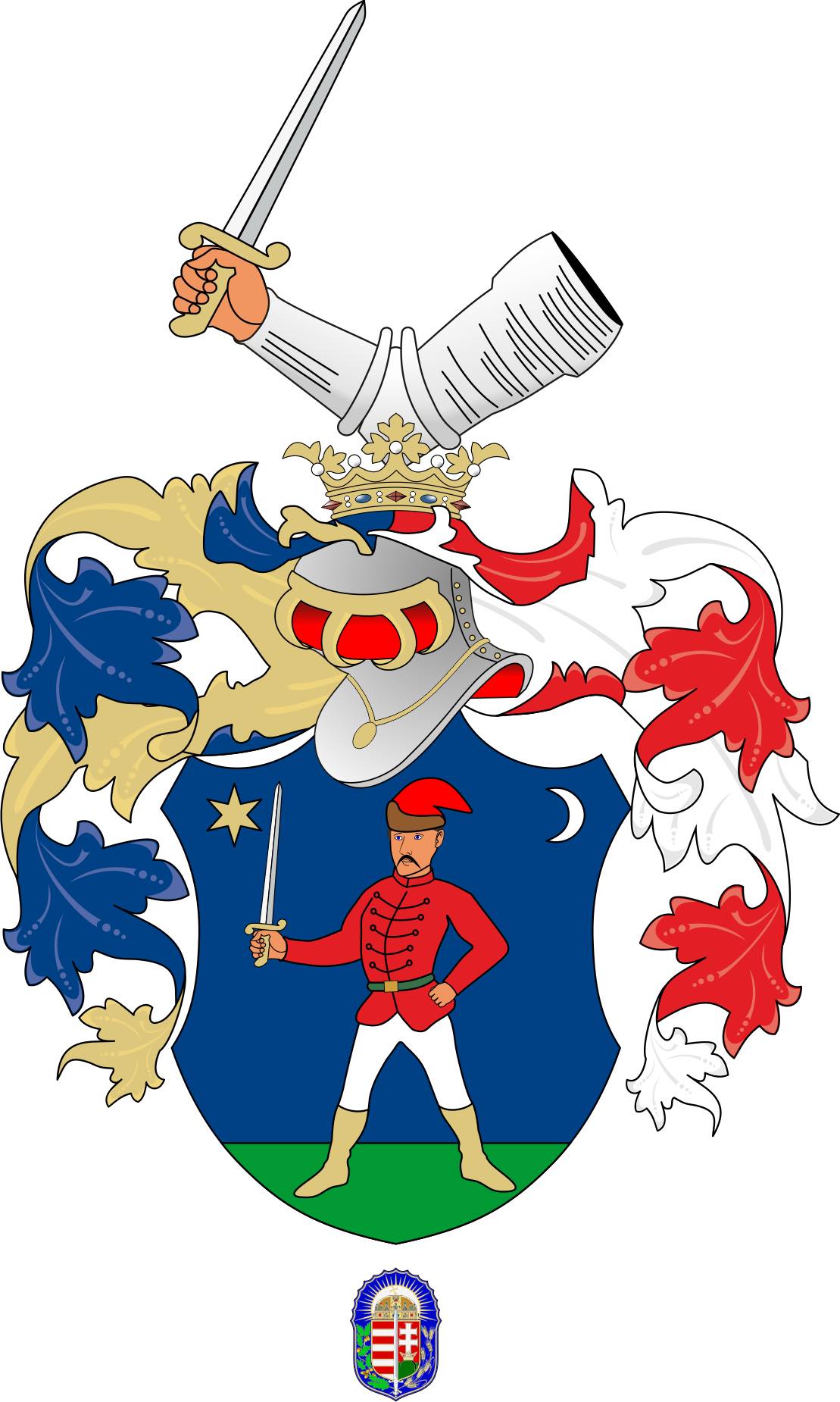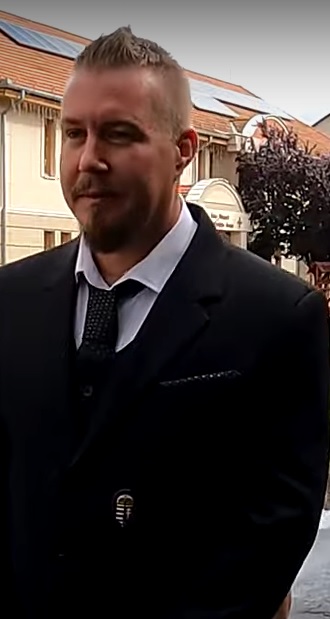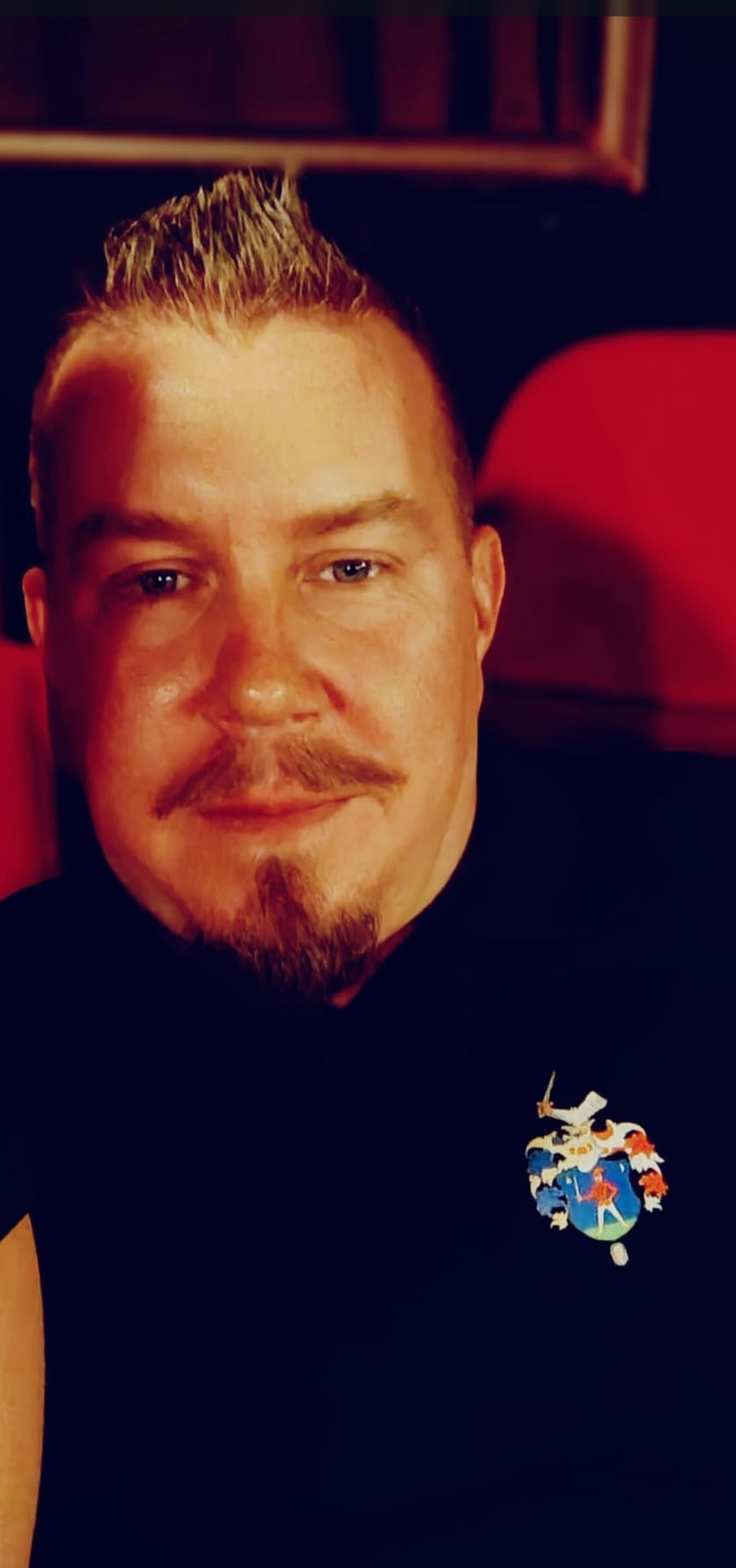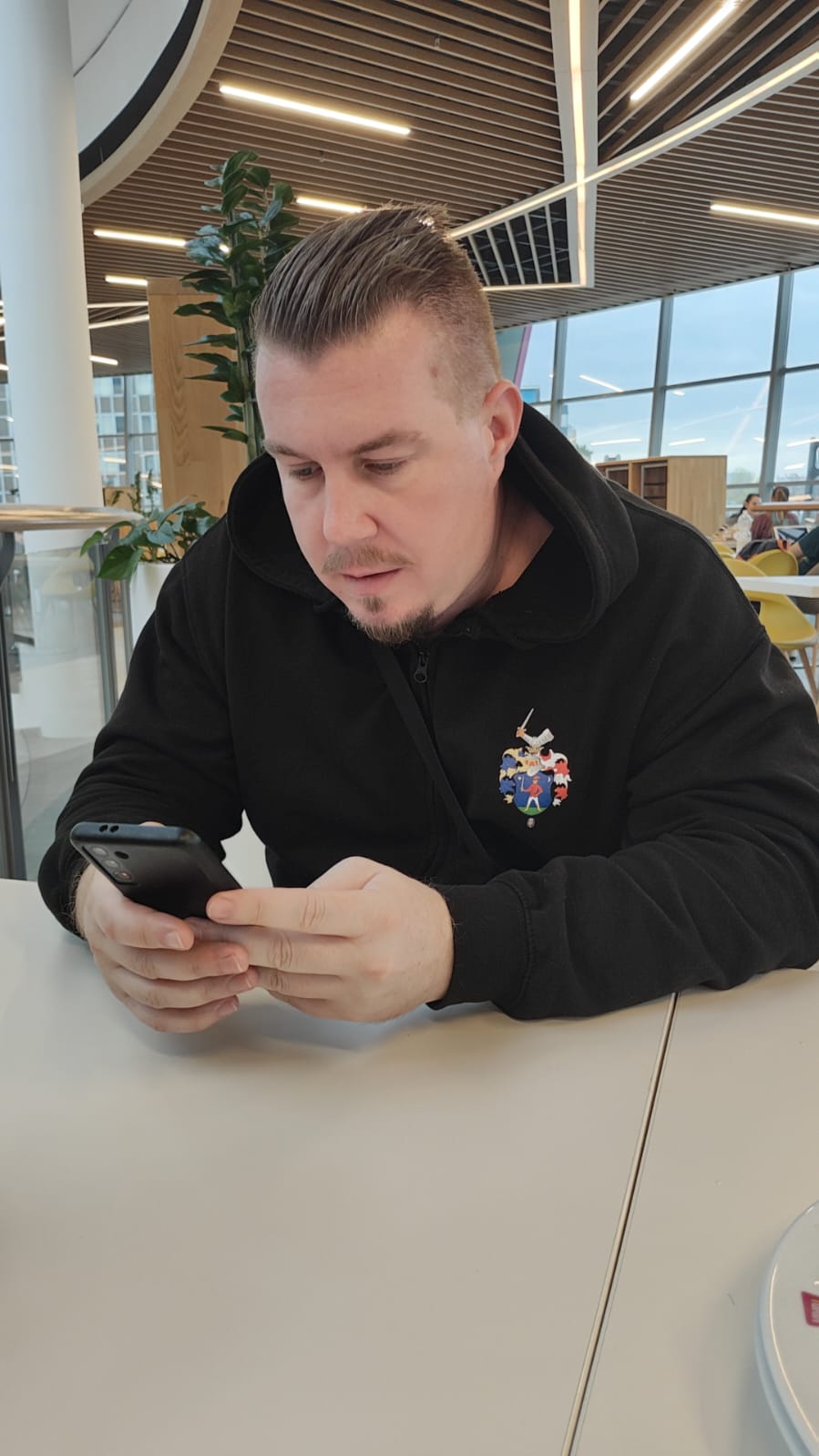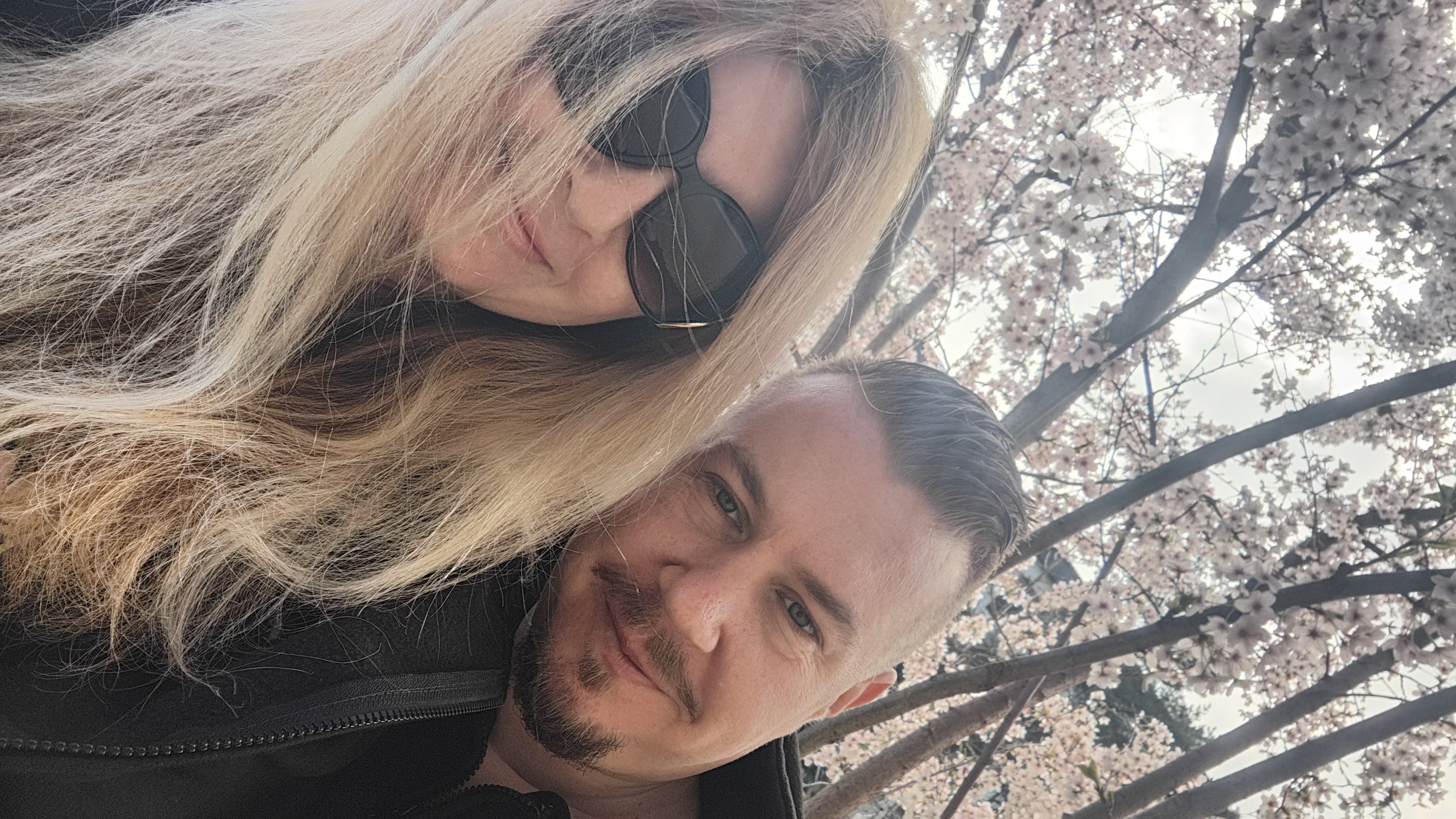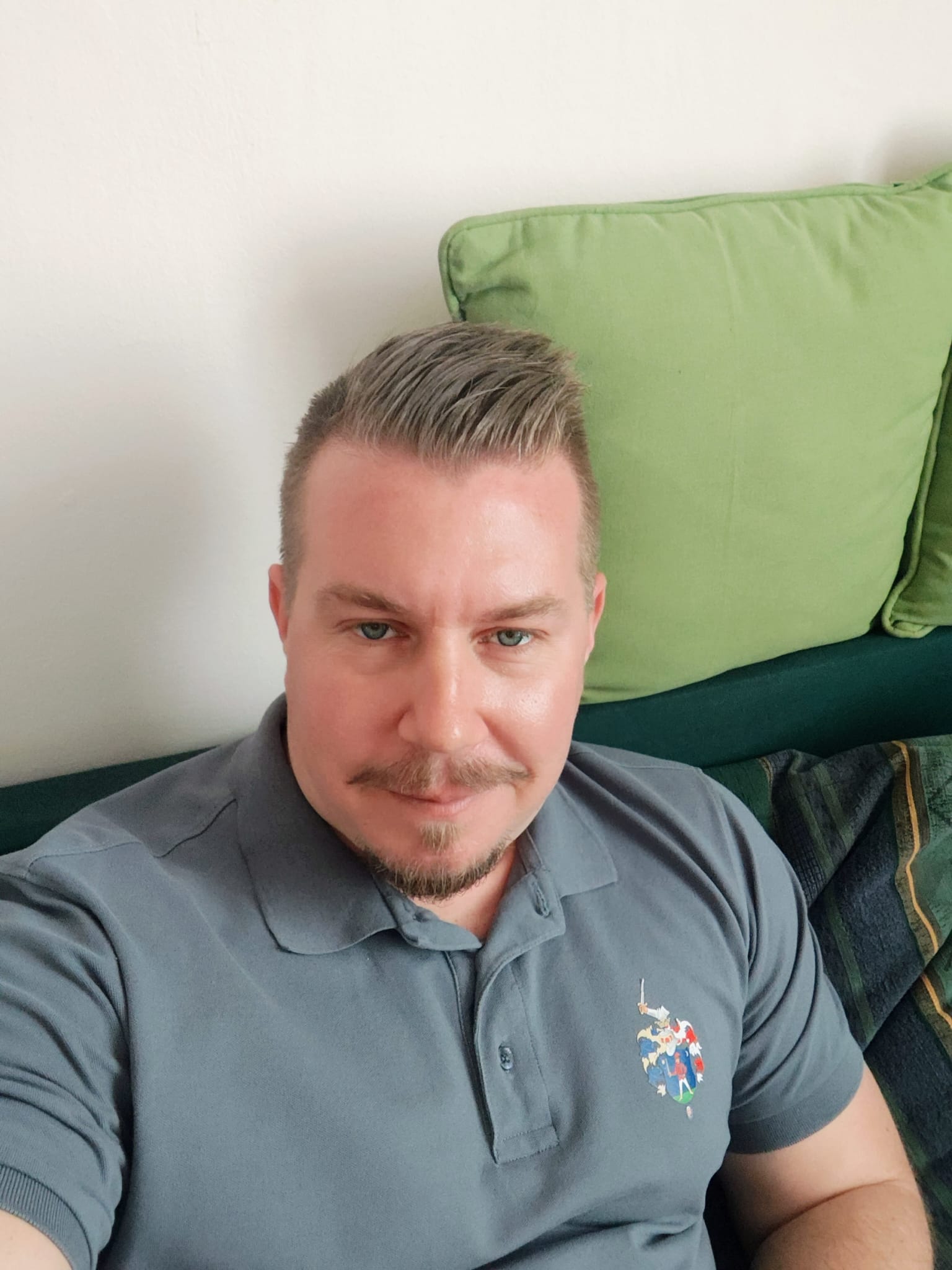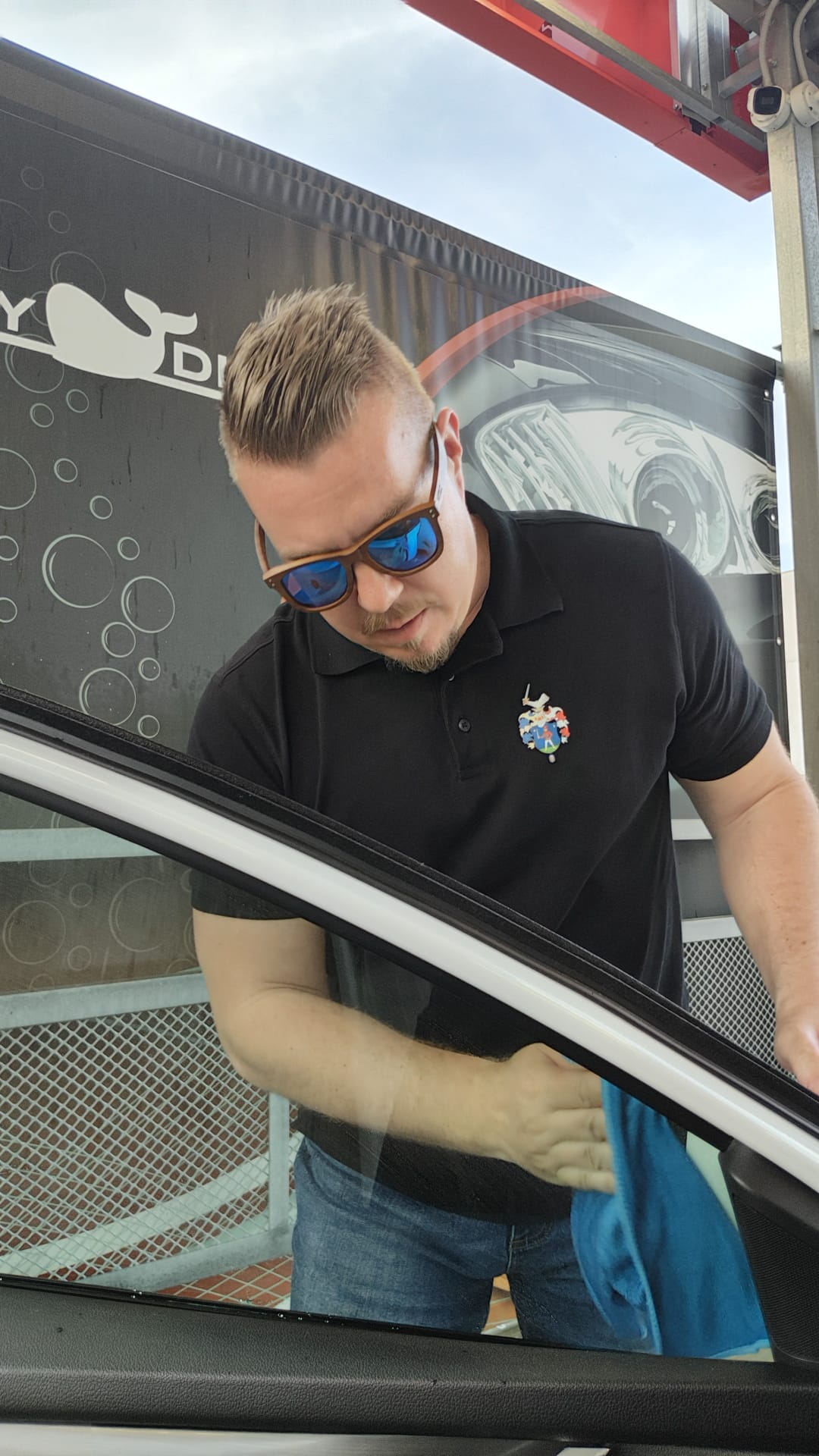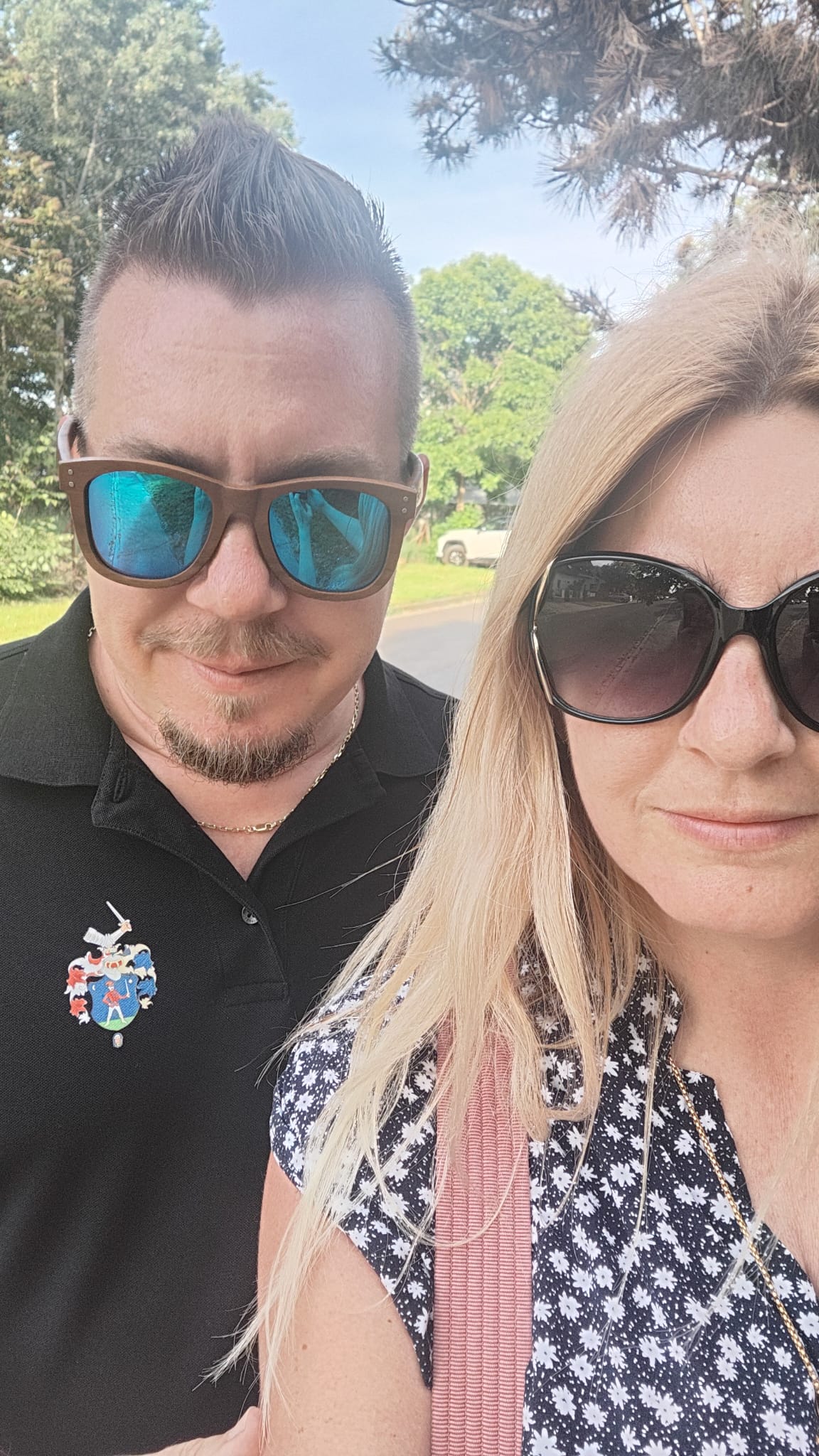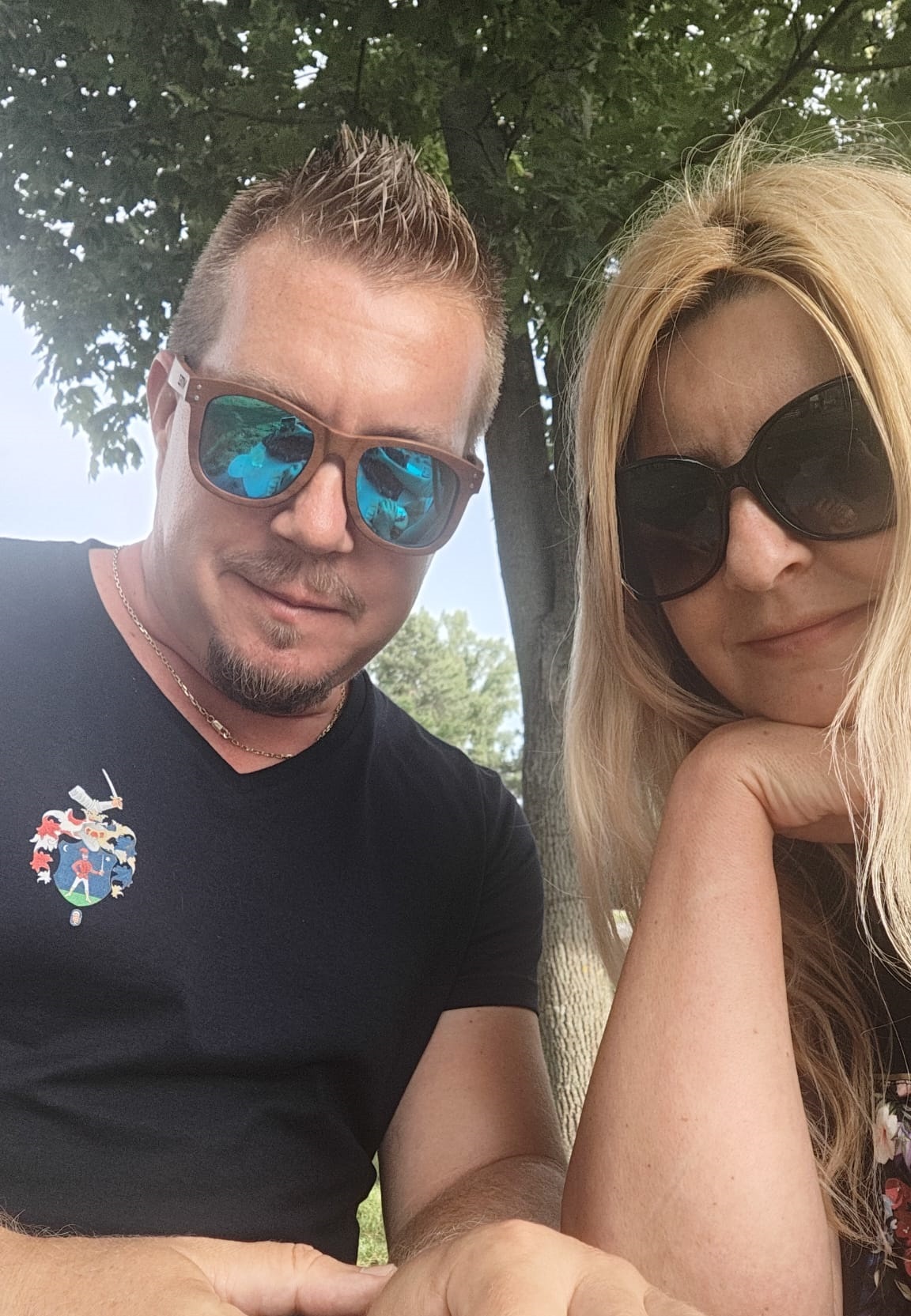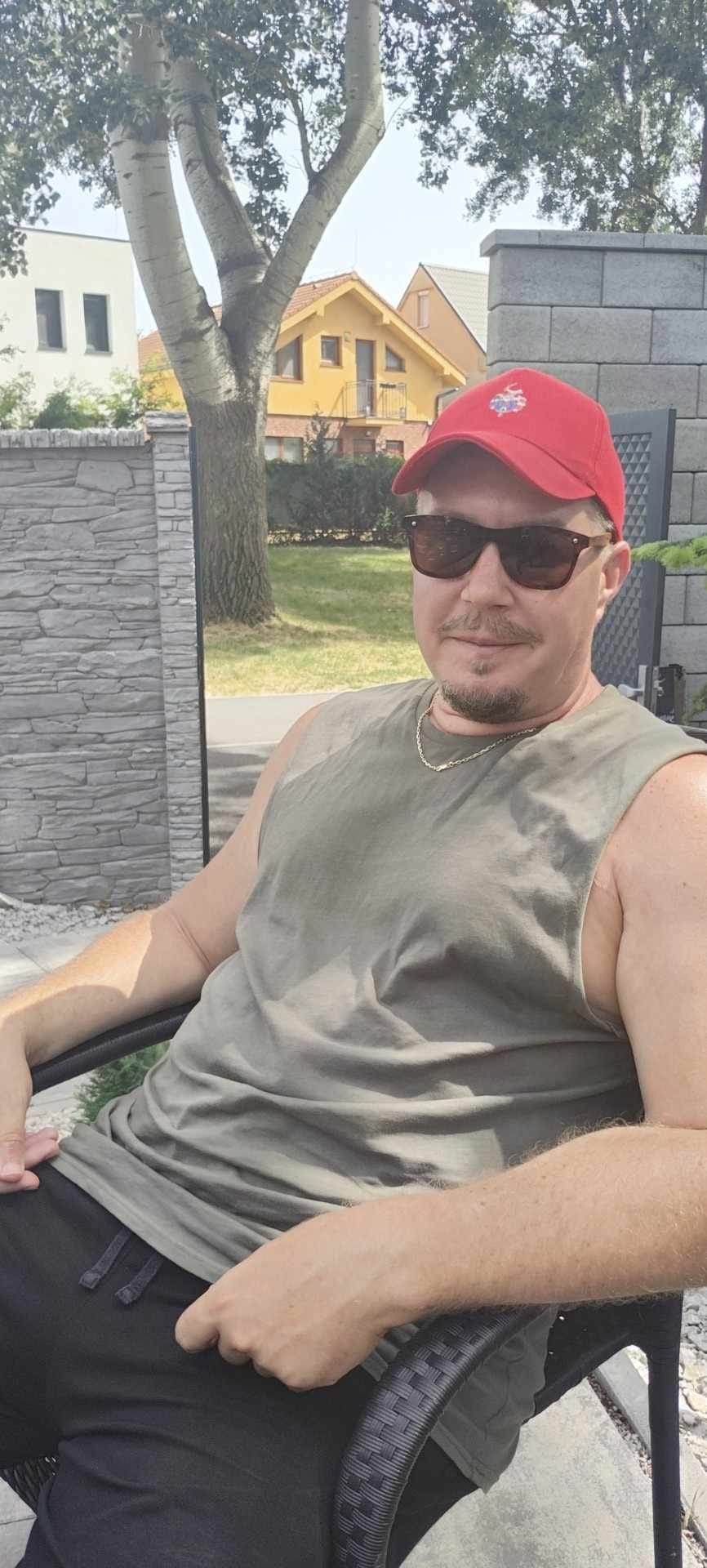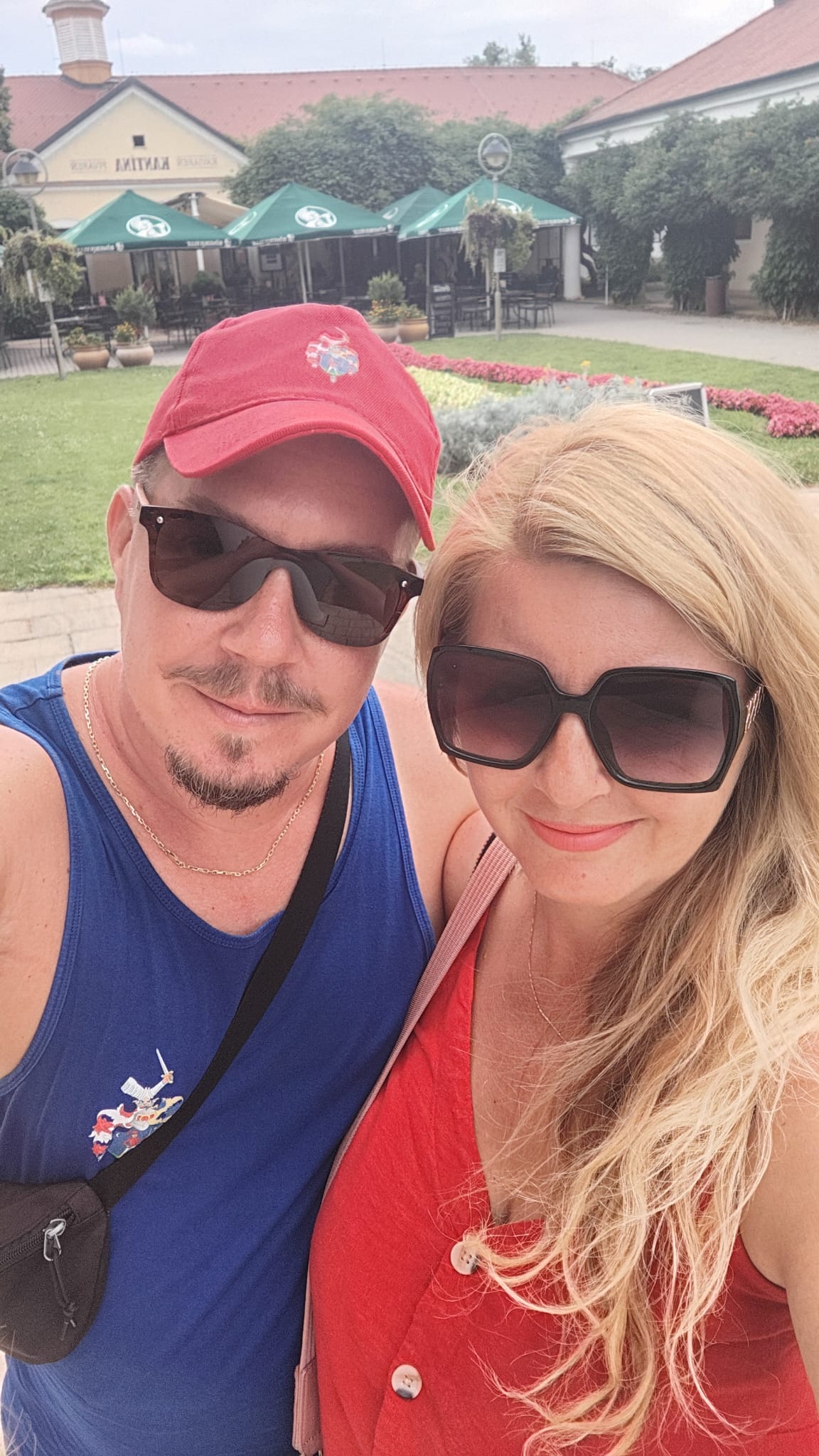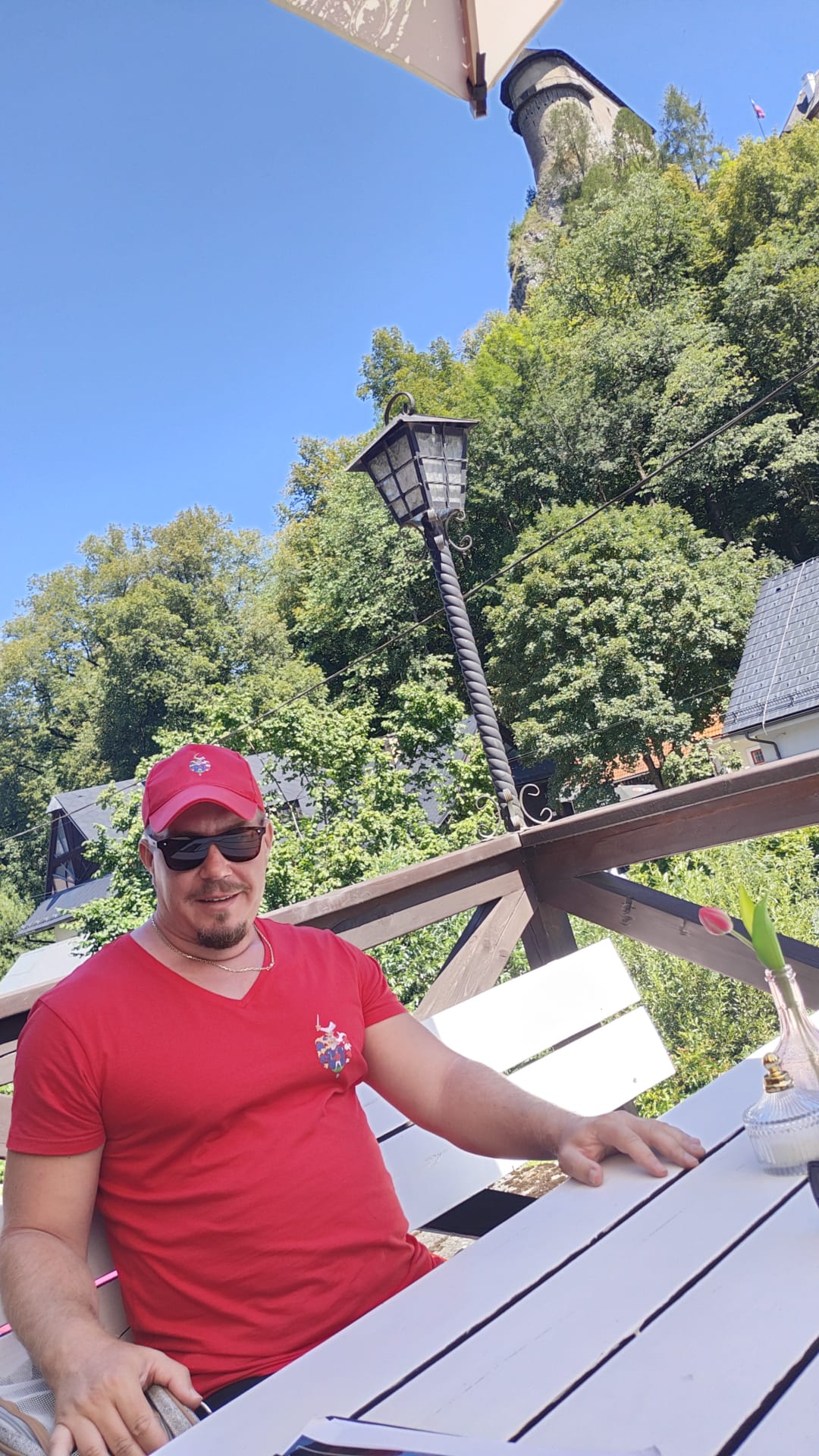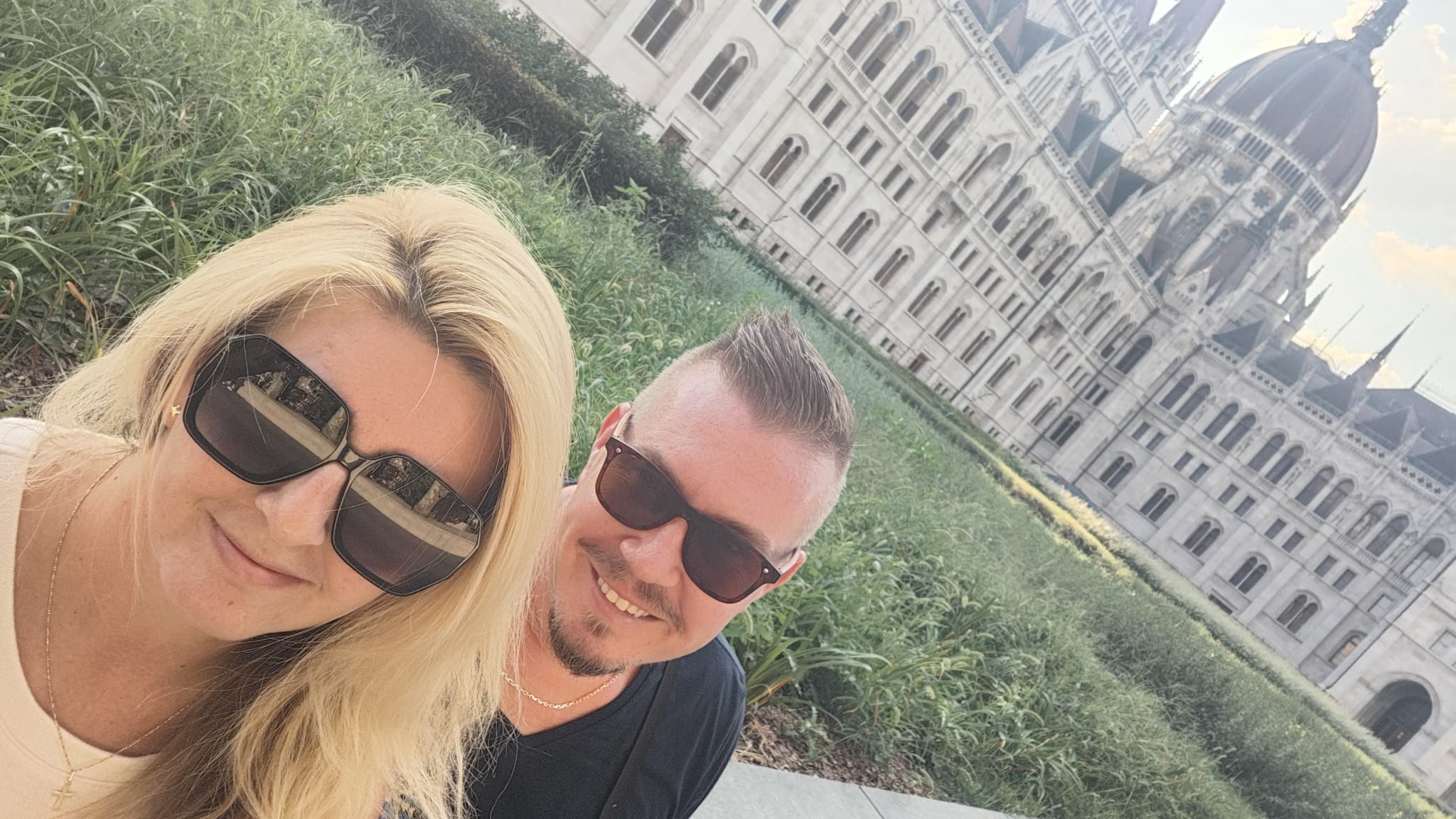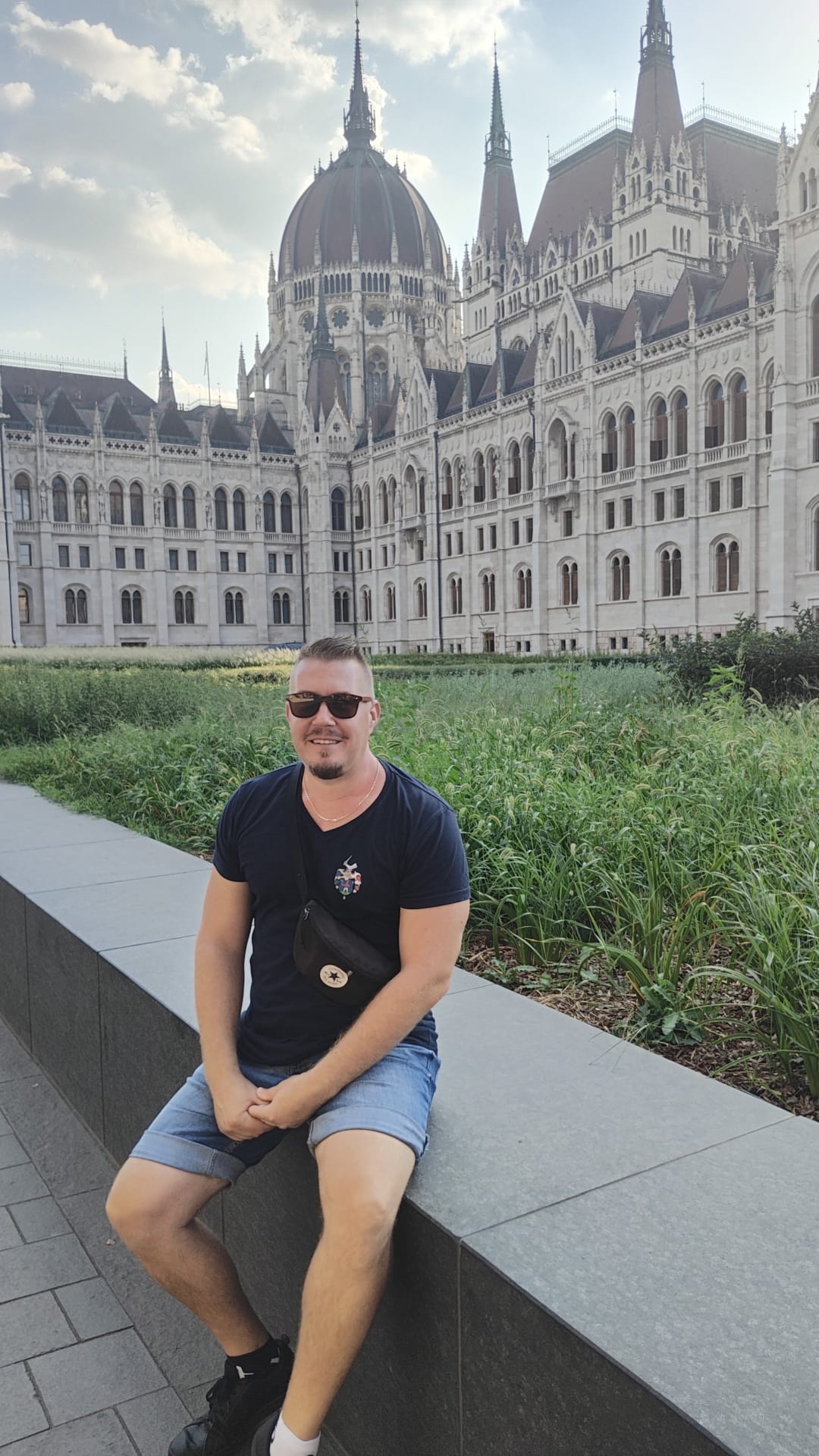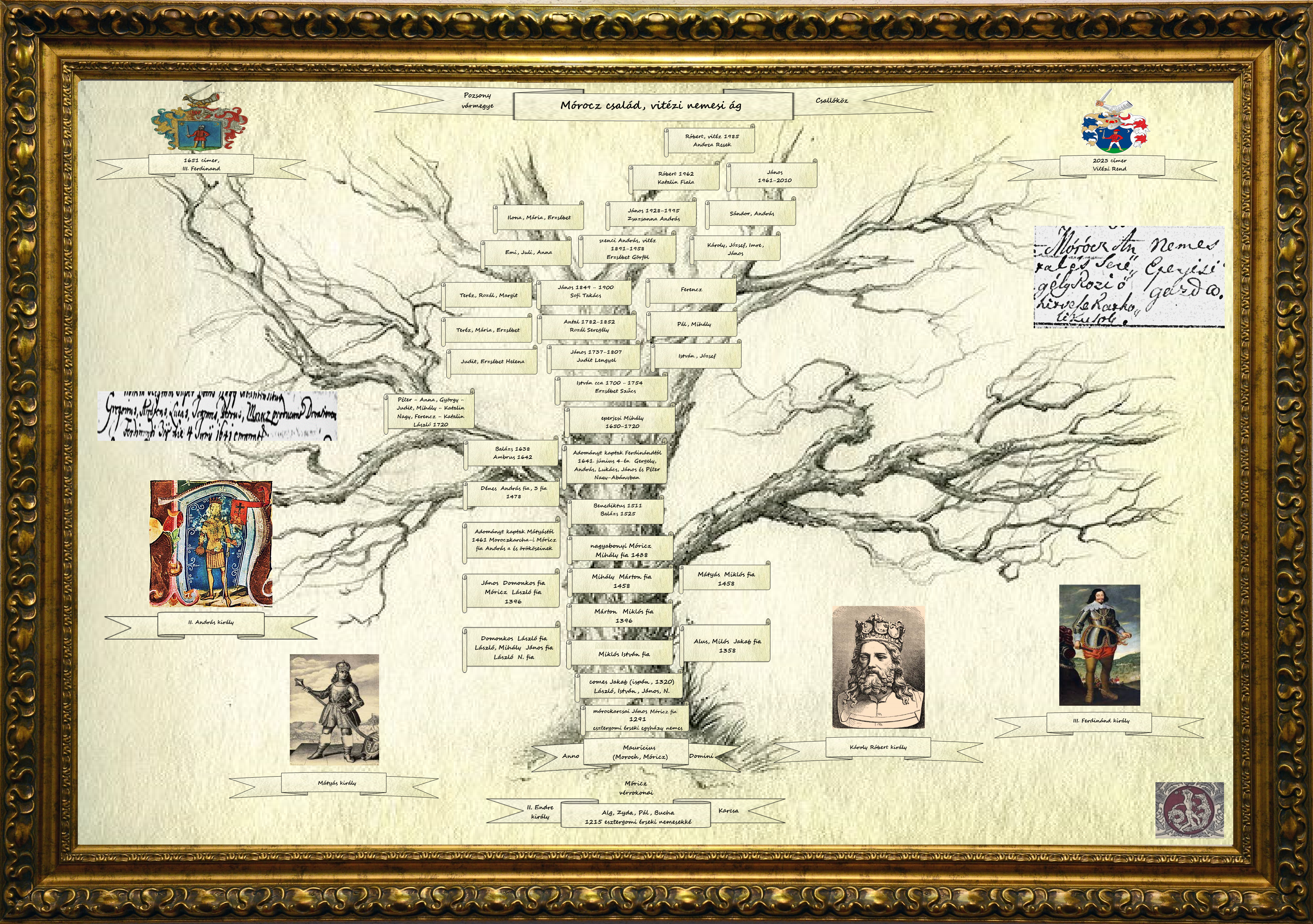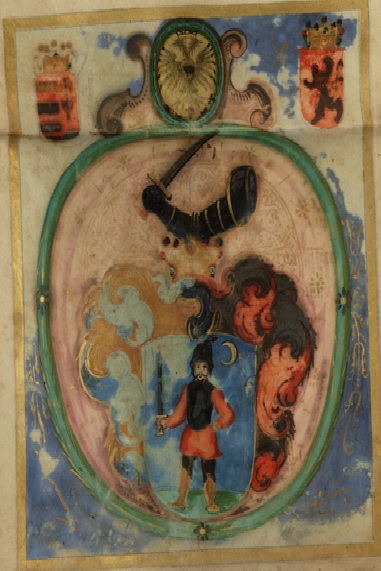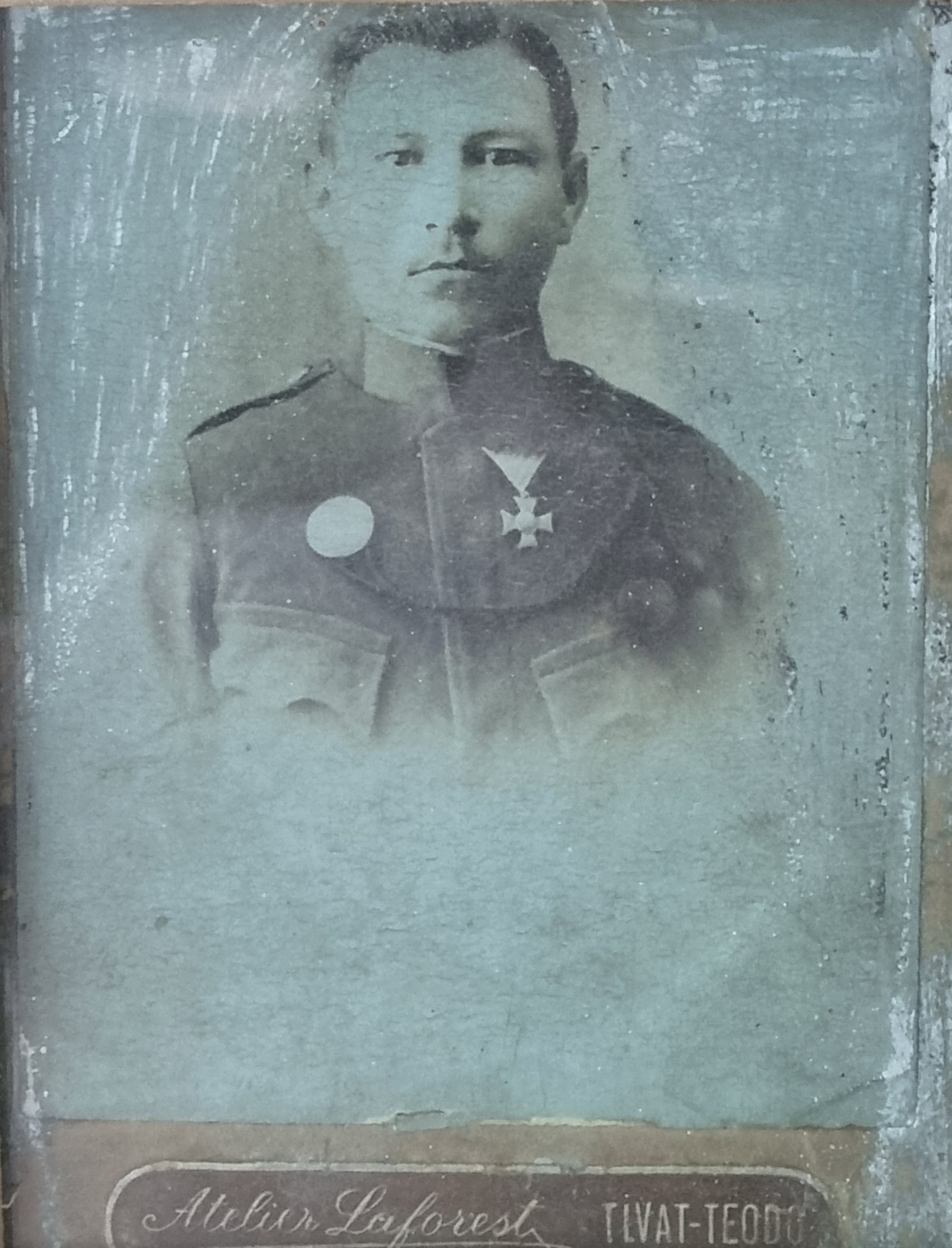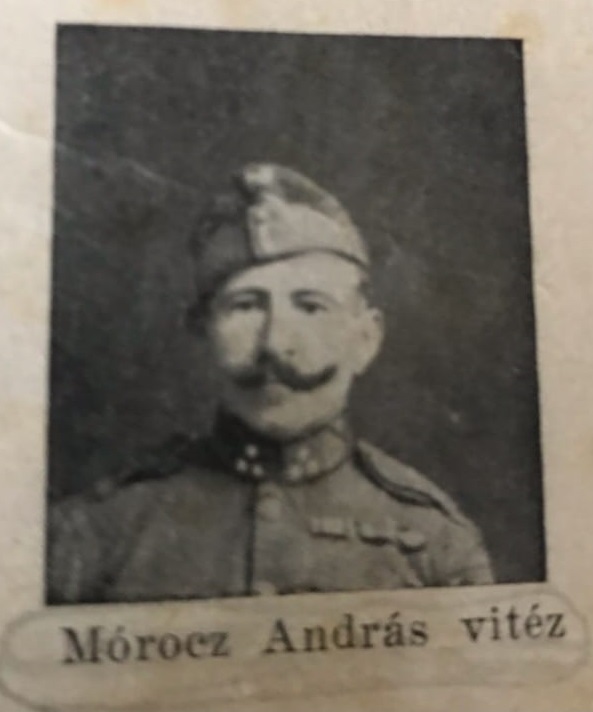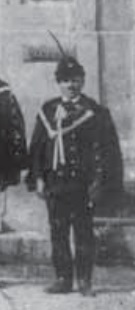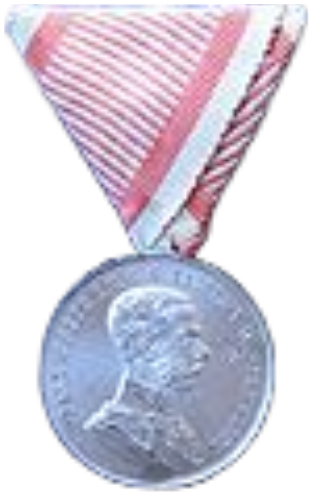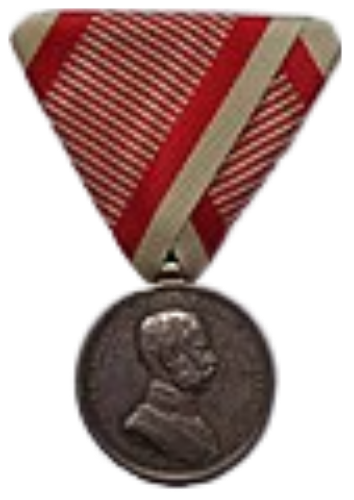the Order of Vitéz
(Habsburg ring) The badge of the Order of Vitéz
Róbert Mórocz
His full unofficial name is Vitéz (knight, hero) John Róbert Maria, a descendant of Mórocz de Nagyabony family, was born in 1985 in Bratislava (Pozsony) to parents Róbert Mórocz and Katarína Fialová. Róbert is the great-grandson of Vitéz Andreas Mórocz de Nagyabony, a nobleman from Žitný island. András was from the ancient noble family of Mórocz de Nagyabony (born in Eperjes, Jahodná) and a hero from the First World War. He was knighted and the member of The Order of Vitéz during the period of the Kingdom of Hungary. His great-grandson is the current continuer of the bloodline. The designation "Vitéz" (hero, warrior, knight) is as old as the Kingdom of Hungary itself. He was knighted in Máriapócs (Hungary) by Joseph Charles of Habsburg-Lorraine, Archduke of Austria and Royal Prince of Hungary from the Palatine branch of Habsburg family in 2022. Many nobles and members of the Habsburg-Lorraine family themselves were and are members of this old order. The order also includes prominent members in addition to members of our former royal family, such as: Prince of Albania, King of Rwanda, Prince of Ethiopia, Duke of Braganza (claimant for the Portuguese throne) and Prince of Hohenlohe-Langenburg. The noble families these include for example: Marquis Pallavicini, Count Batthyany, Széchenyi, Teleki, Zichy, Festetics, Ujlaky, degli Uberti (count of the legendary Casale Monferrato), Baron Tunkel, Riedel and many others. Robert received a diploma confirming his noble origin (nobilis, nemes) and the heraldic commission recognized the coat of arms of his ancestors at the same time. The coat of arms was digitized by the chief herald and the insignia of the Order of Vitéz was added as confirmation of membership in this order.
Robert says „Mórocz family (at least my line) still feel a certain loyalty to our former royal family today and I am very happy to be part of a community that is under the patronage of this still highly respected and influential family in Europe.“
Dynastic legitimate Order of Vitéz
The Order of Vitéz was built on the foundations of almost a thousand years of Hungarian history. Even the chieftain of the Hungarian tribes, Árpád, referred to himself as "Vitéz". The word "Vitéz" can be translated as warrior, hero or knight. Count Emery Thököly de Késmárk bestowed the title "Vitéz" and land on his most valiant warriors in the 17th century. Eventually, this acquired nobility was recognized by the Habsburgs themselves. This is explaining why they are the patrons of the order today. The hereditary Order of the Vitéz was founded (restored) on these foundations by the regent of the Kingdom of Hungary, Vitéz Miklós Horthy de Nagybány in 1920. The regent wanted to revive the ideas of the old knightly times built on Hungarian tradition and reward the bravest. The Order of Vitéz was a community of true warriors and heroes. The condition for admission to the order was to obtain at least a small (silver or bronze) medal for bravery (Vitézségi Érem) from the "Great War". However, obtaining this medal did not guarantee admission to the order, as it was only a minimum requirement. It was valued when the applicant obtained a medal for bravery of the first class. Admission to the order was in the form of knighted and the grant of land was also associated. Knighthood was hereditary and passed to the eldest son. The order is under the patronage of the Habsburg-Lorraine House and is among the most respected knightly organizations in the world today. The legitimate Order of Vitéz is a legal entity within the European Union, registered in the Kingdom of Sweden, proudly and confidently standing on traditional European Christian values, it is an internationally recognized and highly respected ideological community. The Order of Vitéz is headed by Archduke Joseph Charles of Habsburg-Lorraine, Crown Prince of Hungary. Archduke Joseph-Augustus of Habsburg-Lorraine became the first knight of the renewed Order of Vitéz in 1920. The Order of Vitéz believes in the highest importance of the most fundamental values of religion, nation and family. The Order is based on the Christian faith (an important principle of the House of Habsburg) and encourages a life with the highest ethical values. It is based on conservative principles and does not participate in modern politics.
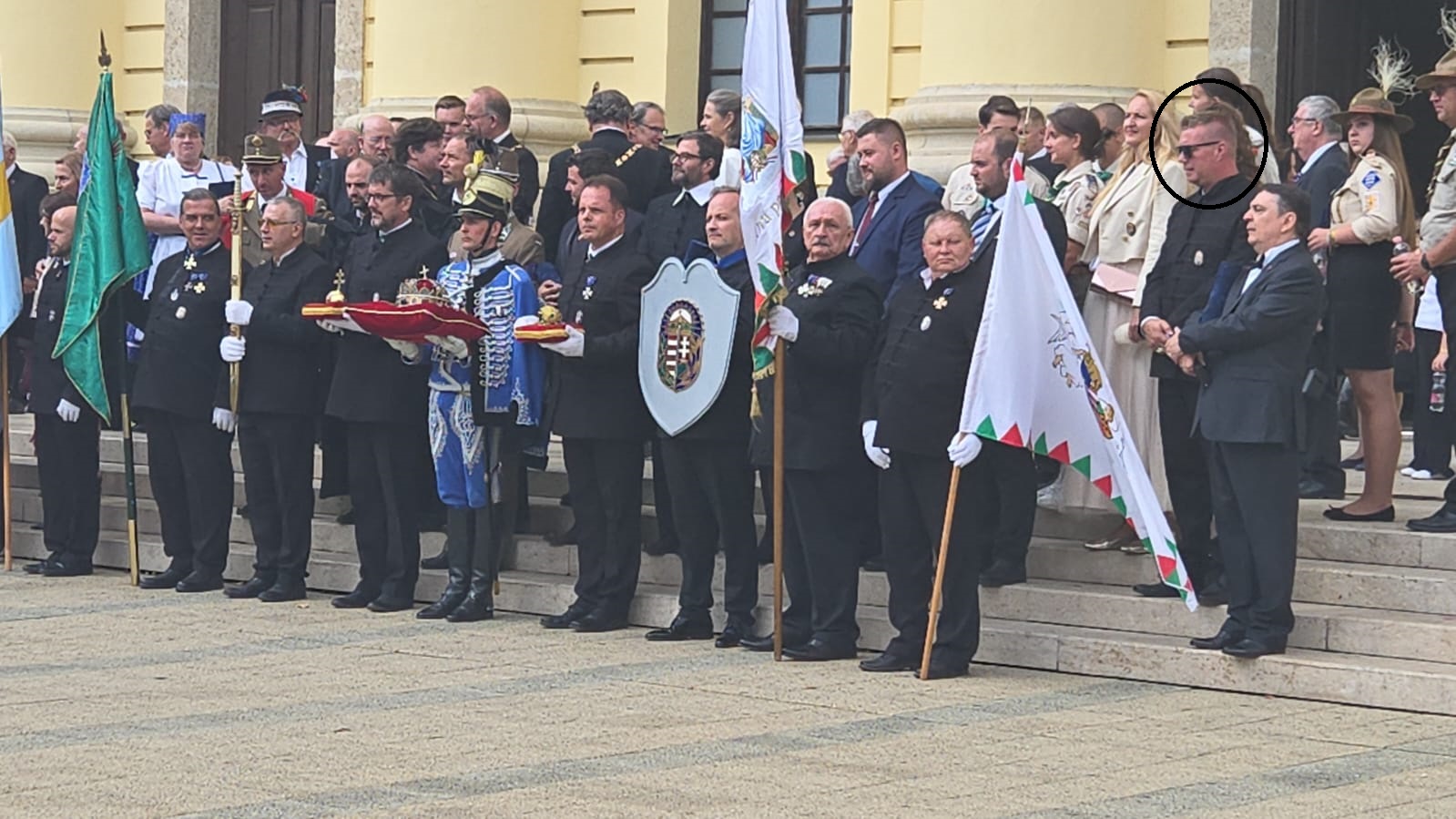 Vitézavatás 2025 (Debrecen)
Vitézavatás 2025 (Debrecen)
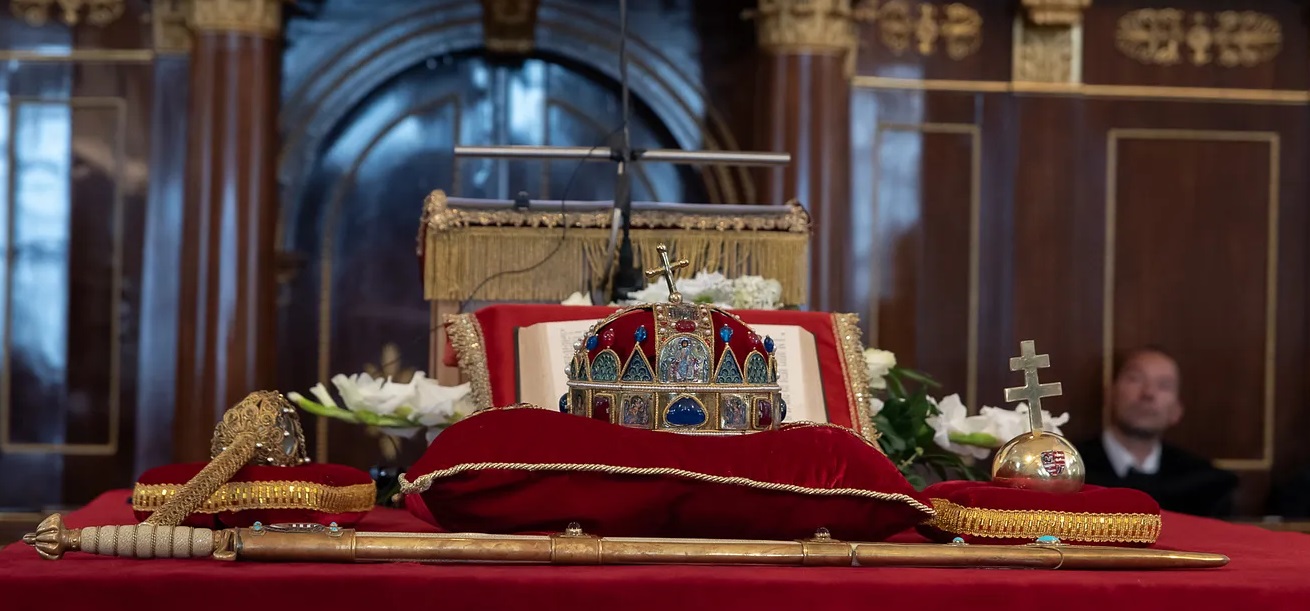 The Holy Crown of Hungary, Szent Korona, sceptre, orb, and sword, the historic symbols of the Kingdom of Hungary and Vitézi Rend
The Holy Crown of Hungary, Szent Korona, sceptre, orb, and sword, the historic symbols of the Kingdom of Hungary and Vitézi Rend
Why de Nagyabony?
The Members of Mórocz de Nagyabony belonged to the old hungarian noble family (régi nemes csalad). They were co-owners and landowners of the village of Velke Blahovo (nagyabonyi közbirtokosok), therefore they wrote the predicate "de Nagyabony" (from Velke Blahovo). The predicate clearly defined and allowed the identification of the members of the family.
The Mórocz of Velke Blahovo (Mórocz de Nagy Abony) could be seen as representative of a typical medieval curial family of the Csallokoz region. Of antiquity and deeds of which the noblest Western European houses would be proud of, it is a Hungarian speciality that these families gradually became pauperised and over the centuries lost much of their wealth, though maintained their mentality. The canker in the state of affairs was, simply, Hungarian inheritance laws. This stipulated that all sons and daughters inherited equally, and it thus impoverished most of the Hungarian nobility.
Velke Blahovo is one of the oldest villages in the region "Csallóköz". The first mention dates back to 1162. It was a noble village that joined the Végvár system and played an important military role by ensuring continuous defensive readiness against the Turks. Mórocz family was awarded the motif of a sword and an armored arm in their coat of arms for the excellent fulfillment of these tasks and bravery. The first records of the family members in Veľké Blahovo (Nagyabony, Naghaban) date from the 15th century.
The first known ancestor is Michael de Nagyabony (1488) a nobleman from Velke Blahovo. His son Mauricio de Nagyabony (Móricz) gave the family the surname. Benedictus Mórocz de Nagyabony, the son of Mauricio, was the first to use the surname "Mórocz", which is derived from his father's first name. Benedictus had estates in the areas called Gaathzeg, Naghozthal and Nadwár in the Velke Blahovo district.
Mórocz family received the property confirmed by royal donation by Ferdinand III in 1641. They acquired or sued for several manors, fields, forests, or meadows in the Veľké Bláhovo area or in adjacent villages in the following years. Some members of the family moved to the nearby village of Eperjes (Jahodna) at the beginning of the 18th century, where they created the so-called Eperjes branch of the family. Members of this branch were recorded in documents as noble Eperjes landlords.
Origin of the surname Morocz
The Mórocz family proudly claim to have ancient origins from the times of the Árpád Hungarian Kingdom. The surname "Mórocz" came from the first name Mauricio (Móric). The ancestors of the future Mórocz de Nagyabony family settled on Zitny island in an area called "Abony". They allegedly descended from castle soldiers who were given the use of this piece of land for military service. The first documented direct ancestor from the 15th century was named Michael de Nagyabony, a nobleman from Velke Blahovo. His son Mauricio de Nagyabony is considered the forefather of the Mórocz family from Velke Blahovo. The son of Mauricio, Benedictus first used the surname "Mórocz" after his father's first name at the beginning of the 16th century.
